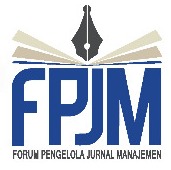A Simple Stress Test on Indonesian Islamic Banking Industry
Abstract
The purpose of this study is to conduct a stress test on Indonesian Islamic Banking industry in order to assess the capability of the industry to absorb the extreme risks that may happen in the future. Using data from April 2008 to September 2014, the study employs a balance sheet approach in performing the stress test on profitability and capital position and the value at risk technique for liquidity stress test. The results of this study show that in term of profitability, Islamic banks in Indonesia are immune from losses if the default rate (Non-Performing Loan) is less than 8.5 %. If the industry can improve the profit margin, the resistance will be higher. In term of capital position, by assuming loss given default (LGD) is constant at 40%, the industry will not go bankrupt if a probability of default (PD) is less than 9%. If the PD is more than 9%, a total expected loss is more than available capital. Using the value at risk (VaR) at 99% confidence, the study finds that possible deposit flight will not exceed IDR 26 trillion and the liquid asset available is IDR 28 trillion. The study concludes that there is no liquidity threat for Islamic banks in Indonesia. The finding also uncovers the risky condition that even though the capital adequacy ratio (CAR) is on average 14%, real capital measured by Equity to the total asset (ETA) is only 5.4%.
JEL Classification: G17; G21
Keywords
Full Text:
PDFReferences
Beltratti, A., & Stulz, R. M. (2011). The credit crisis around the globe: why did some banks perform better? (February 11, 2011). Fisher College of Business Working Paper No. 2010-03-005.
BCBS. (2009). Principles for sound stress testing practices and supervision. Basel Committee on Banking Supervision. Retrieved from: https://www.bis.org/publ/bcbs147.pdf. August 19, 2017.
Bernanke, B. S. (2013). Stress testing banks: What have we learned? Financial Markets Conference Speech, Federal Reserve Bank of Atlanta. Retrieved from: http://www.federalreserve.gov/newsevents/speech/bernanke20130408a.htm. September 8, 2017
Boss, M. (2002). A macroeconomic credit risk model for stress testing the Austrian credit portfolio. Financial Stability Report, 4, 64-82.
Borio, C., Drehmann, M., & Tsatsaronis, K. (2013). Stress-testing macro stress testing: Does it live up to expectations? Journal of Financial Stability, 12, 1-13.
Chong, B. S., & Liu, M. H. (2010). Islamic banking: interest-free or interest-based? Pacific-Basin Finance Journal, 17(1), 125-144.
Drehmann, M. (2008). Stress tests: Objectives, challenges and modeling choices. Economic Review, 2, 60-91.
ECB. (2010). EU Stress test Exercise. Key Messages on Methodological Issues. European Central Bank. Retrieved from: http://www.ecb.int. December 12, 2017
ECB. (2010). EU Stress test Exercise. Technical Note on the Macroeconomic Scenarios and Reference Risk Parameters. European Central Bank. Retrieved from: http://www.ecb.int. December 20, 2017
Ismal, R., 2010. The management of liquidity risk in Islamic banks: The Case of Indonesia. Theses. Durham University.
Madura, J. (2008). Financial institutions and markets. Cengage Learning EMEA.
Sorge, M., & K. Virolainen. (2006). A comparative analysis of macro stress testing methodologies with application to Finland. Journal of Financial Stability, 2, 113-151.
Smolo, E. & Mirakhor, A. (2010). The global financial crisis and its implications for the Islamic Financial Industry. International Journal of Islamic and Middle Eastern Finance, 3(4), 372 - 385
DOI: https://doi.org/10.26905/jkdp.v22i1.571
Refbacks
- There are currently no refbacks.
Jurnal Keuangan dan Perbankan (Journal of Finance and Banking)
Diploma Program of Banking and Finance, Faculty of Economics and Business, University of Merdeka Malang
Published by University of Merdeka Malang
Mailing Address:
2nd floor Finance and Banking Building, Jl. Terusan Raya Dieng No. 57 Malang, East Java, Indonesia
Phone: +62 813-3180-1534
Email: jkp@unmer.ac.id
 This work is licensed under a Creative
This work is licensed under a Creative
Commons Attribution-ShareAlike 4.0




